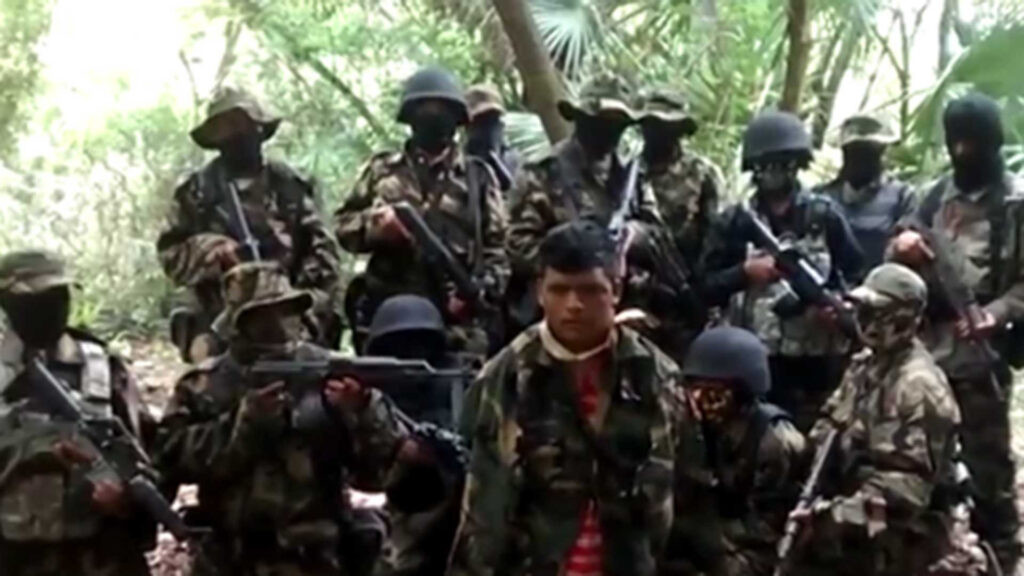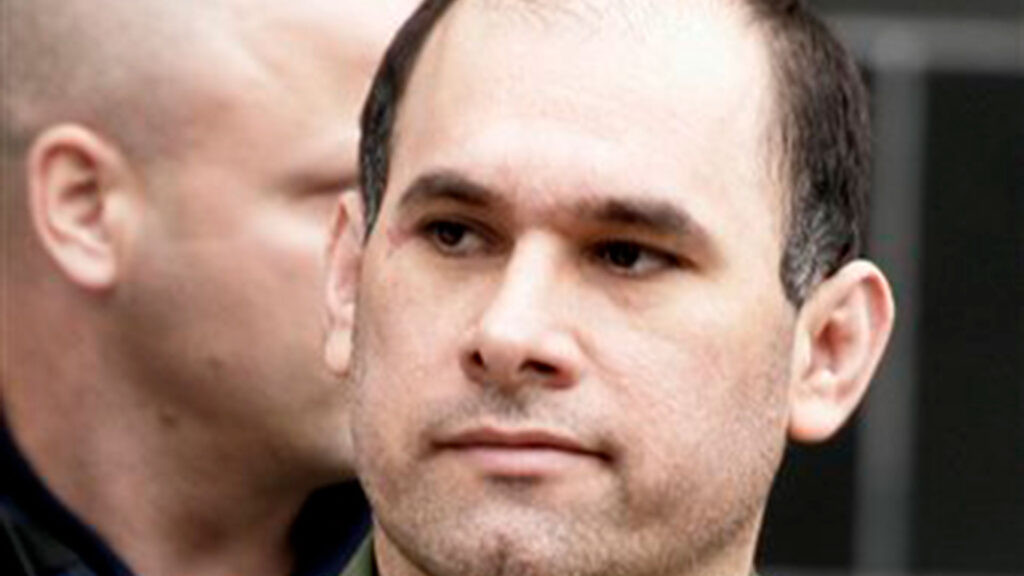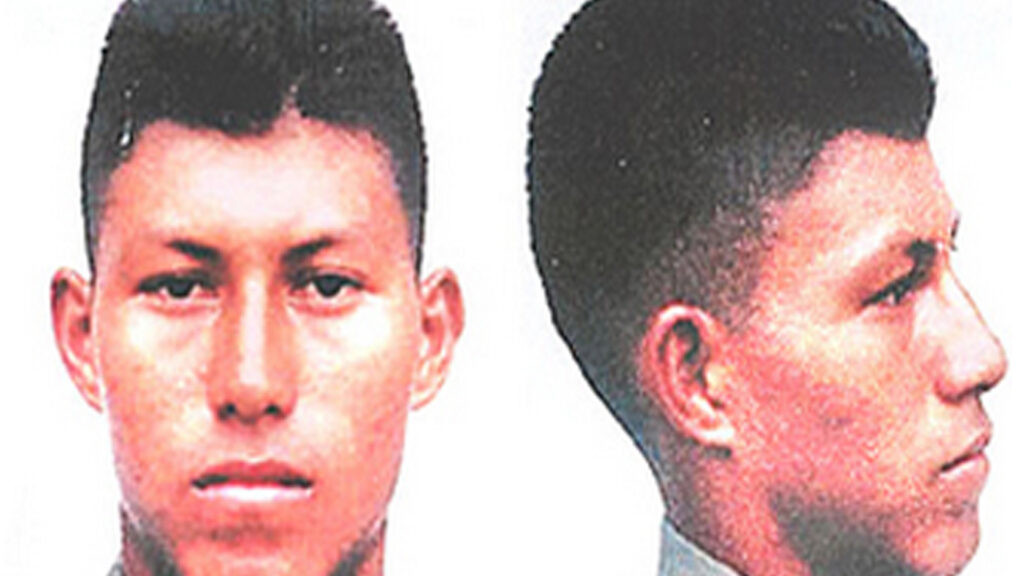Navigating Mexico requires awareness, and at gaymexico.net, we prioritize your safety and well-being. Understanding the security landscape, including information about cartels, is crucial for safe travels. This article explores which cartel poses the greatest threat in Mexico, offering insights to help you stay informed and secure during your visit. Explore the best tips to ensure your well-being and security and discover resources for safe and enjoyable travel experiences.
1. Understanding the Cartel Landscape in Mexico
The cartel landscape in Mexico is complex and ever-changing. Several cartels vie for power, each with its own territory, tactics, and level of influence. Understanding this dynamic environment is the first step in assessing which cartel poses the greatest danger.
- Jalisco New Generation Cartel (CJNG): Known for its rapid expansion and aggressive tactics, the CJNG has become one of the most powerful cartels in Mexico.
- Sinaloa Cartel: While weakened by internal conflicts and the capture of its leaders, the Sinaloa Cartel remains a significant player in the drug trade.
- Gulf Cartel: One of the oldest cartels in Mexico, the Gulf Cartel has experienced periods of decline but still maintains a presence in certain regions.
- Los Zetas: Once considered one of the most brutal cartels, Los Zetas has been fragmented by internal divisions and government pressure.
- Knights Templar Cartel: This cartel, which once controlled significant territory, has been weakened by arrests and internal strife.
 Mexican police officers stand guard during a drug-related operation, showcasing the ongoing efforts to combat cartel activity in Mexico.
Mexican police officers stand guard during a drug-related operation, showcasing the ongoing efforts to combat cartel activity in Mexico.
2. Factors Determining a Cartel’s Danger Level
Several factors determine how dangerous a cartel is:
- Territorial Control: Cartels that control large swaths of territory have greater resources and influence, making them more dangerous to operate within their domain.
- Violence and Tactics: Cartels known for extreme violence, such as massacres, kidnappings, and attacks on government officials, pose a greater threat to public safety.
- Political Influence: Cartels that have infiltrated government institutions and law enforcement agencies wield significant power and can operate with impunity.
- Economic Resources: Cartels with vast financial resources can corrupt officials, fund their operations, and sustain their presence despite law enforcement efforts.
- International Reach: Cartels with international connections can expand their operations beyond Mexico, increasing their global influence and posing threats to multiple countries.
3. The Jalisco New Generation Cartel (CJNG): A Rising Force
The Jalisco New Generation Cartel (CJNG) has risen to prominence in recent years due to its aggressive expansion and violent tactics. Led by Nemesio “El Mencho” Oseguera Cervantes, the CJNG has challenged the dominance of the Sinaloa Cartel and established a presence in numerous states across Mexico.
3.1. Key Characteristics of CJNG
- Rapid Expansion: The CJNG has rapidly expanded its territory through violence and intimidation, taking control of key drug trafficking routes and strategic locations.
- Aggressive Tactics: The cartel is known for its brazen attacks on law enforcement and military personnel, as well as its use of improvised explosive devices (IEDs).
- Sophisticated Operations: The CJNG operates with a high degree of organization and sophistication, employing advanced communication technology and financial strategies.
- Propaganda and Recruitment: The cartel uses propaganda campaigns to recruit new members and project an image of power and invincibility.
- International Connections: The CJNG has established links with criminal organizations in other countries, facilitating the trafficking of drugs and other illicit goods.
3.2. CJNG’s Impact on Security in Mexico
The CJNG’s rise has had a significant impact on security in Mexico:
- Increased Violence: The cartel’s expansion has led to a surge in violence in many parts of the country, as it clashes with rival cartels and security forces.
- Displacement of Communities: The CJNG’s presence has forced many people to flee their homes, creating a humanitarian crisis in affected areas.
- Corruption of Officials: The cartel has been implicated in bribing and intimidating government officials, undermining the rule of law and hindering law enforcement efforts.
- Economic Disruption: The CJNG’s activities have disrupted local economies, as businesses are forced to pay extortion money or shut down altogether.
- Erosion of Trust: The cartel’s violence and corruption have eroded public trust in government institutions and security forces.
4. The Sinaloa Cartel: A Declining but Still Potent Force
The Sinaloa Cartel, once led by Joaquin “El Chapo” Guzman, remains a significant player in the Mexican drug trade despite facing internal conflicts and the capture of its leaders. The cartel controls key trafficking routes and maintains a vast network of operatives and collaborators.
4.1. Key Characteristics of the Sinaloa Cartel
- Vast Network: The Sinaloa Cartel has a vast network of operatives, collaborators, and front companies that span across Mexico and into other countries.
- Sophisticated Logistics: The cartel employs sophisticated logistics to transport drugs and other illicit goods, using tunnels, aircraft, and maritime vessels.
- Corruption of Officials: The Sinaloa Cartel has a long history of corrupting government officials, allowing it to operate with impunity and avoid law enforcement scrutiny.
- Internal Conflicts: The cartel has been plagued by internal conflicts and power struggles, particularly after the capture of El Chapo Guzman.
- Diversification of Activities: The Sinaloa Cartel has diversified its activities beyond drug trafficking, engaging in money laundering, extortion, and human trafficking.
4.2. Sinaloa Cartel’s Impact on Security in Mexico
The Sinaloa Cartel’s activities continue to have a significant impact on security in Mexico:
- Ongoing Violence: Despite its decline, the Sinaloa Cartel remains involved in violent conflicts with rival cartels and security forces.
- Drug Trafficking: The cartel continues to traffic large quantities of drugs into the United States and other countries, fueling addiction and violence.
- Corruption: The Sinaloa Cartel’s corruption of government officials undermines the rule of law and hinders law enforcement efforts.
- Economic Disruption: The cartel’s activities disrupt local economies, as businesses are forced to pay extortion money or shut down altogether.
- Erosion of Trust: The cartel’s violence and corruption erode public trust in government institutions and security forces.
 Osiel Cárdenas Guillen, once a powerful figure in the Gulf Cartel, played a significant role in the early development of Los Zetas.
Osiel Cárdenas Guillen, once a powerful figure in the Gulf Cartel, played a significant role in the early development of Los Zetas.
5. Other Cartels and Criminal Organizations in Mexico
In addition to the CJNG and the Sinaloa Cartel, several other cartels and criminal organizations operate in Mexico, each with its own area of influence and level of danger.
5.1. Gulf Cartel
The Gulf Cartel, once one of the most powerful cartels in Mexico, has experienced periods of decline but still maintains a presence in certain regions. The cartel is involved in drug trafficking, extortion, and other criminal activities.
5.2. Los Zetas
Los Zetas, once considered one of the most brutal cartels, has been fragmented by internal divisions and government pressure. The cartel is known for its violence and its involvement in kidnappings, extortion, and human trafficking.
5.3. Knights Templar Cartel
The Knights Templar Cartel, which once controlled significant territory, has been weakened by arrests and internal strife. The cartel is known for its religious ideology and its involvement in drug trafficking, extortion, and illegal mining.
5.4. Cartel del Noreste (CDN)
The Cartel del Noreste (CDN), a splinter group of Los Zetas, operates primarily in northeastern Mexico. The cartel is known for its violence and its involvement in drug trafficking, extortion, and human smuggling.
6. Regional Variations in Cartel Activity
Cartel activity varies significantly across different regions of Mexico:
- Northern Border: The northern border region, particularly cities like Tijuana and Ciudad Juarez, is a hotbed of cartel activity due to its proximity to the United States and its role as a major drug trafficking route.
- Pacific Coast: The Pacific coast region, including states like Sinaloa, Jalisco, and Michoacan, is a major area of conflict between rival cartels vying for control of drug production and trafficking routes.
- Central Mexico: Central Mexico, including states like Guanajuato and Mexico City, has seen a rise in cartel activity in recent years, as cartels seek to expand their operations and control key economic sectors.
- Southern Mexico: Southern Mexico, including states like Guerrero and Oaxaca, is a region with a long history of social unrest and political instability, which has created opportunities for cartels to operate and expand their influence.
7. Government Efforts to Combat Cartels
The Mexican government has made efforts to combat cartels, but these efforts have had limited success:
- Military Deployments: The government has deployed military forces to combat cartels in several states, but this has often led to increased violence and human rights abuses.
- Law Enforcement Operations: Law enforcement agencies have conducted operations to arrest cartel leaders and dismantle their organizations, but these efforts have been hampered by corruption and lack of resources.
- International Cooperation: The government has cooperated with international partners, such as the United States, to combat drug trafficking and other criminal activities, but this cooperation has been limited by political and logistical challenges.
8. Impact on LGBTQ+ Travelers in Mexico
The cartel landscape in Mexico can impact LGBTQ+ travelers in several ways:
- Safety Concerns: Cartel violence can pose a threat to the safety of LGBTQ+ travelers, particularly in areas with high levels of cartel activity.
- Discrimination and Harassment: LGBTQ+ individuals may face discrimination and harassment from cartel members or local communities influenced by cartel ideology.
- Targeted Violence: LGBTQ+ individuals have been targeted by cartels in some cases, particularly if they are perceived to be involved in illegal activities or challenge cartel authority.
- Limited Access to Resources: LGBTQ+ travelers may have limited access to resources and support services in areas with high levels of cartel activity.
- Psychological Impact: The threat of cartel violence can have a psychological impact on LGBTQ+ travelers, causing anxiety, fear, and stress.
 Arturo Guzmán Decena, known as Z-1, was a key figure in the formation of Los Zetas, bringing military expertise to the cartel.
Arturo Guzmán Decena, known as Z-1, was a key figure in the formation of Los Zetas, bringing military expertise to the cartel.
9. Safety Tips for LGBTQ+ Travelers in Mexico
Here are some safety tips for LGBTQ+ travelers in Mexico:
9.1. Research Destinations
Research destinations thoroughly to identify areas with high levels of cartel activity and potential risks.
9.2. Stay Informed
Stay informed about current events and security conditions in the areas you plan to visit.
9.3. Avoid Risky Areas
Avoid traveling to areas known for high levels of cartel activity or violence.
9.4. Travel in Groups
Travel in groups whenever possible, especially in unfamiliar areas.
9.5. Be Discreet
Be discreet about your sexual orientation or gender identity, particularly in conservative areas.
9.6. Trust Your Instincts
Trust your instincts and avoid situations that feel unsafe or uncomfortable.
9.7. Seek Local Advice
Seek advice from local LGBTQ+ organizations or community leaders about safety and security.
9.8. Report Incidents
Report any incidents of discrimination, harassment, or violence to the authorities.
9.9. Utilize Trusted Resources
Rely on trusted resources like gaymexico.net for up-to-date information and support.
9.10. Secure Accommodations
Choose accommodations in well-lit and secure areas with positive reviews from LGBTQ+ travelers.
9.11. Transportation Safety
Use reputable transportation services and avoid unmarked taxis or public transportation at night.
9.12. Limit Alcohol Consumption
Limit alcohol consumption to stay alert and aware of your surroundings.
9.13. Emergency Contacts
Keep emergency contact information readily available, including local law enforcement and embassy details.
9.14. Cultural Sensitivity
Be aware of local customs and traditions and respect cultural norms.
9.15. Digital Security
Protect your digital security by using strong passwords and being cautious about sharing personal information online.
10. Resources for LGBTQ+ Travelers in Mexico
Several resources are available to support LGBTQ+ travelers in Mexico:
- GayMexico.net: A comprehensive website offering information and resources for LGBTQ+ travelers in Mexico.
- Address: 3255 Wilshire Blvd, Los Angeles, CA 90010, United States
- Phone: +1 (213) 380-2177
- Website: gaymexico.net
- Local LGBTQ+ Organizations: Several LGBTQ+ organizations operate in Mexico, providing support and resources to the community.
- International LGBTQ+ Travel Guides: Numerous travel guides cater specifically to LGBTQ+ travelers, offering information on safe and welcoming destinations.
- Embassies and Consulates: Embassies and consulates can provide assistance to travelers in distress, including LGBTQ+ individuals.
11. Conclusion: Staying Safe and Informed
While the cartel landscape in Mexico presents challenges, LGBTQ+ travelers can still have safe and enjoyable experiences by staying informed, taking precautions, and utilizing available resources. Visit gaymexico.net for the latest updates and tips to ensure a secure and memorable trip. Understanding the risks associated with cartels and taking appropriate measures can help you minimize your exposure to danger and maximize your enjoyment of this vibrant and culturally rich country.
Understanding the Key Takeaways
- Cartel Awareness: Being aware of cartel activities in different regions is crucial for planning a safe trip.
- Safety Measures: Implementing practical safety measures, such as avoiding risky areas and traveling in groups, can significantly reduce potential risks.
- Resource Utilization: Utilizing resources like gaymexico.net and local LGBTQ+ organizations ensures you have access to reliable information and support.
12. FAQs about Cartels in Mexico
12.1. Which cartel is currently the most dangerous in Mexico?
Currently, the Jalisco New Generation Cartel (CJNG) is widely considered the most dangerous cartel in Mexico due to its rapid expansion, aggressive tactics, and widespread presence.
12.2. How do cartels impact tourism in Mexico?
Cartel violence can deter tourists from visiting certain areas, leading to economic losses for the tourism industry. Additionally, tourists may face risks of violence, extortion, or kidnapping in areas with high levels of cartel activity.
12.3. Are there specific regions in Mexico that are safer than others?
Some regions in Mexico are generally considered safer than others, such as tourist destinations like Puerto Vallarta, San Miguel de Allende, and parts of the Yucatan Peninsula. However, it’s essential to stay informed about current security conditions and take precautions even in these areas.
12.4. What can LGBTQ+ travelers do to minimize their risk in Mexico?
LGBTQ+ travelers can minimize their risk by researching destinations, avoiding risky areas, traveling in groups, being discreet, and seeking advice from local LGBTQ+ organizations.
12.5. How does the Mexican government combat cartels?
The Mexican government combats cartels through military deployments, law enforcement operations, and international cooperation. However, these efforts have been hampered by corruption and lack of resources.
12.6. What resources are available for LGBTQ+ travelers in Mexico who need help?
Resources available for LGBTQ+ travelers in Mexico who need help include gaymexico.net, local LGBTQ+ organizations, international LGBTQ+ travel guides, and embassies and consulates.
12.7. How can I stay updated on the latest security conditions in Mexico?
You can stay updated on the latest security conditions in Mexico by monitoring news reports, travel advisories, and social media feeds from reputable sources.
12.8. Is it safe to travel alone in Mexico as an LGBTQ+ individual?
Traveling alone in Mexico as an LGBTQ+ individual can be riskier than traveling in a group. It’s essential to take extra precautions and be aware of your surroundings at all times.
12.9. What should I do if I encounter cartel violence in Mexico?
If you encounter cartel violence in Mexico, you should seek shelter immediately, avoid engaging with cartel members, and contact the authorities as soon as it is safe to do so.
12.10. How can I support efforts to combat cartels in Mexico?
You can support efforts to combat cartels in Mexico by donating to organizations that promote human rights, supporting sustainable development initiatives, and advocating for responsible drug policies.
13. Call to Action: Explore Mexico Safely with GayMexico.net
Ready to explore the beauty and diversity of Mexico? Visit gaymexico.net for comprehensive travel guides, event listings, and connections to the LGBTQ+ community in Mexico. Ensure your journey is safe, informed, and unforgettable by using our resources and staying connected with us. Your adventure awaits—start planning today!
Explore Mexico with confidence! gaymexico.net provides up-to-date travel guides, safety tips, and LGBTQ+ community connections. Plan your adventure now for a safe and unforgettable experience.